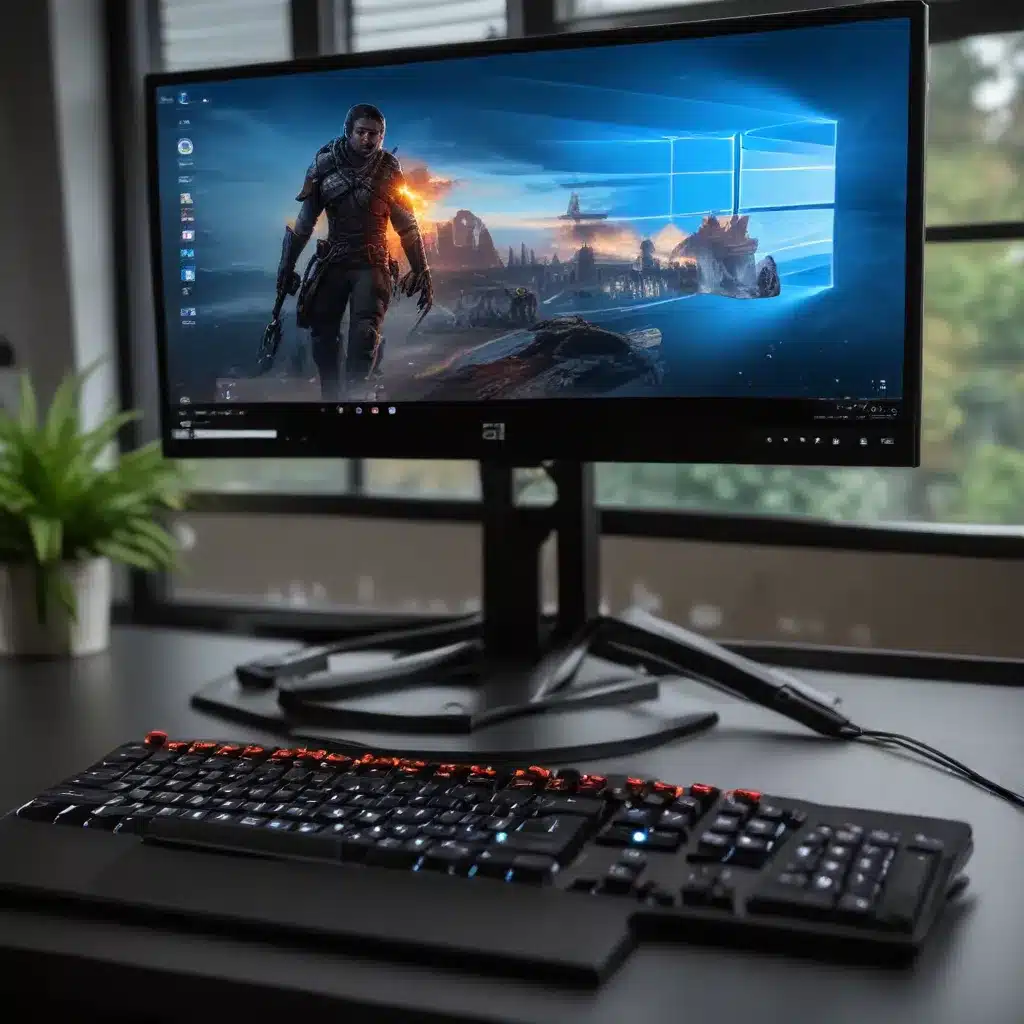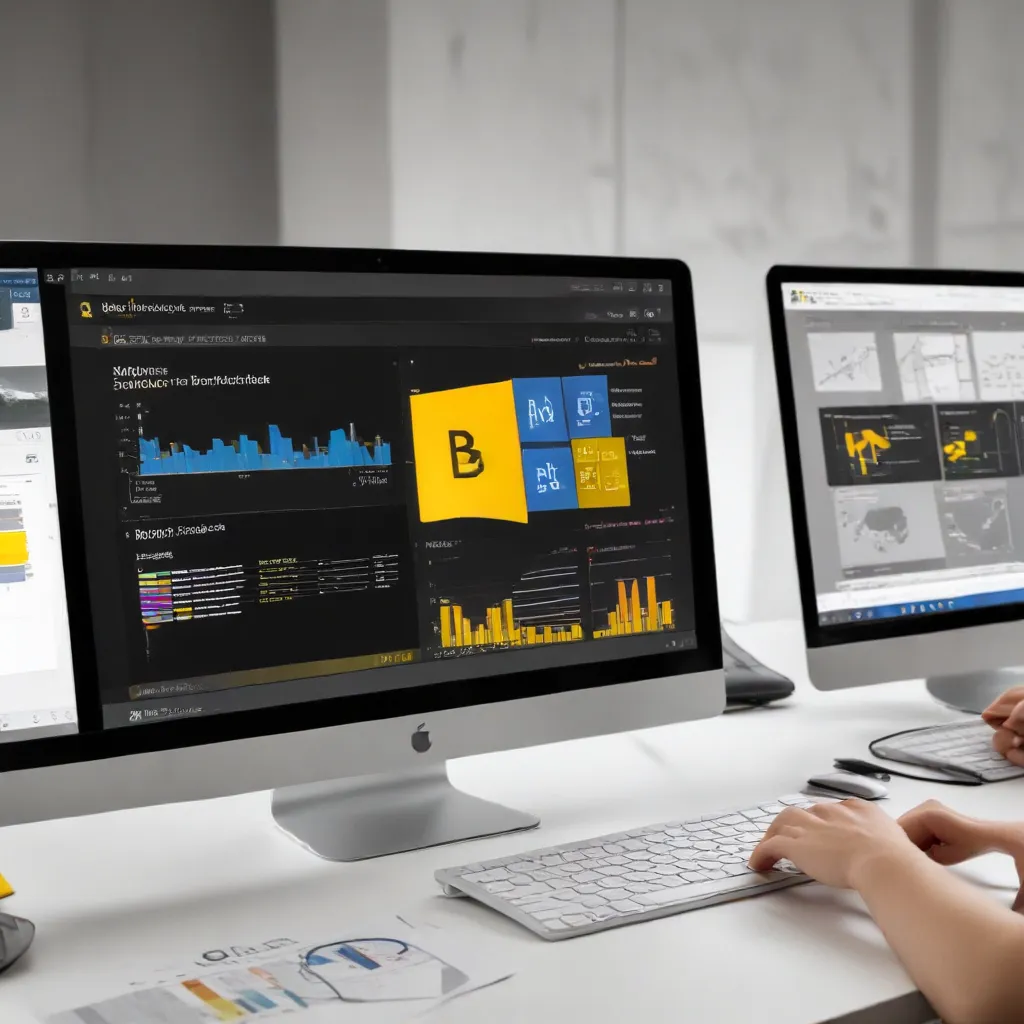
Unleash Your PC’s Full Potential for Immersive Gaming
As a seasoned IT professional, I’ve helped countless gamers optimize their Windows 10 systems for the ultimate gaming experience. Whether you’re rocking the latest high-end rig or trying to squeeze every last drop of performance from an aging machine, this comprehensive guide will teach you proven techniques to boost your FPS, reduce lag, and elevate your gaming to new heights.
From simple tweaks to advanced hardware upgrades, we’ll cover a wide range of strategies to help you get the most out of your Windows 10 gaming setup. So, grab your mouse, keyboard, and a cup of coffee, and let’s dive in!
Prioritize Performance with Windows Game Mode
One of the easiest ways to optimize Windows 10 for gaming is to enable the built-in Game Mode. This powerful feature is designed to prioritize system resources for your games, ensuring a smoother, more responsive experience.
Here’s how to activate Game Mode:
- Open the Settings app by pressing the Windows key + I.
- Navigate to the Gaming section and click on Game Mode.
- Toggle the Game Mode setting to On.
With Game Mode enabled, Windows will automatically reduce background activity and allocate more resources to your games, resulting in improved frame rates and reduced latency.
Optimize Your Display Settings
One of the quickest and most effective ways to boost your in-game performance is to lower your game’s resolution. While this may result in a slight visual downgrade, the impact on your frame rate can be dramatic.
Start by reducing your game’s resolution from 1080p (1920 x 1080) to 900p (1600 x 900) or even 720p (1280 x 720). This can immediately free up a significant amount of GPU resources, allowing your system to render frames more efficiently.
In addition to adjusting the resolution, explore your game’s graphics settings and experiment with reducing the quality of elements like shadows, lighting, textures, and anti-aliasing. These visual enhancements can be resource-intensive, so finding the right balance between visual fidelity and performance is key.
Update Your Graphics Drivers
Keeping your graphics drivers up-to-date is crucial for optimizing your Windows 10 gaming performance. Outdated drivers can lead to a host of issues, including poor frame rates, stuttering, and even crashes.
Depending on your GPU manufacturer, follow these steps to update your drivers:
Nvidia GeForce:
1. Visit the Nvidia GeForce website.
2. Select your graphics card model and the Windows version you’re using.
3. Click the “Start Search” button to find the latest driver update.
AMD Radeon:
1. Head over to the AMD Drivers and Support website.
2. Choose your graphics card and the appropriate Windows version.
3. Download and install the latest driver package.
Intel HD Graphics:
1. Visit the Intel Download Center for graphics drivers.
2. Select your graphics chip and the corresponding Windows version.
3. Download and install the latest driver update.
Updating your graphics drivers can provide a significant performance boost, with some users reporting up to a 23% increase in FPS after a driver update.
Manage Background Processes and Bloatware
Over time, your Windows 10 system can become bogged down by unnecessary programs and background processes, significantly impacting your gaming performance. It’s time to clean house and optimize your system for gaming.
Use AVG TuneUp to Streamline Your PC:
1. Download and install AVG TuneUp.
2. Launch the program and navigate to the “Speed Up” tile.
3. Click the “Details” button to access the “Background & startup programs” section.
4. Review the list of running programs and click the “Put all to sleep” button to pause any unnecessary background tasks.
AVG TuneUp’s powerful optimization tools will help you identify and remove unwanted programs, freeing up valuable system resources for your games.
Boost Your Wi-Fi and Monitor Refresh Rate
While a fast internet connection won’t directly impact your in-game frame rates, it can help reduce latency and improve your overall gaming experience. Consider optimizing your Wi-Fi setup by:
- Positioning your router as close to your gaming device as possible.
- Upgrading to a newer, faster Wi-Fi router or mesh network system.
- Connecting your gaming PC or console directly to the router via Ethernet for the best possible connection.
Additionally, ensure that your monitor’s refresh rate is set to the highest available setting. Most modern displays support 120Hz or 144Hz refresh rates, which can provide a noticeably smoother and more responsive gaming experience compared to the standard 60Hz.
To adjust your monitor’s refresh rate:
- Open the Settings app and navigate to the Display section.
- Click on Advanced display settings.
- Select the highest available refresh rate from the dropdown menu.
By optimizing your Wi-Fi and display settings, you’ll create a more immersive and responsive gaming environment.
Disable Mouse Acceleration for Precise Control
Mouse acceleration is a feature that adjusts the cursor’s movement based on the speed at which you move the mouse. While this can be helpful for general desktop use, it can be detrimental to your gaming performance, as it introduces inconsistent and unpredictable cursor behavior.
To disable mouse acceleration:
- Type “mouse settings” in the Windows search bar and select the “Mouse settings” app.
- Click on the “Additional mouse options” link.
- Navigate to the “Pointer Options” tab and uncheck the “Enhance pointer precision” box.
This will ensure that your mouse movements are registered consistently, providing you with the precise control needed for demanding games.
Unleash Advanced Optimization Techniques
Now that you’ve covered the basics, it’s time to dive into some more advanced techniques to squeeze every last drop of performance from your Windows 10 gaming setup.
Install an In-Game FPS Counter:
Use a tool like MSI Afterburner or the built-in Steam overlay to display an in-game FPS counter. This will help you identify performance bottlenecks and monitor the impact of your optimization efforts.
Overclock Your Graphics Card:
Carefully overclocking your GPU can provide a significant boost in gaming performance. Just be sure to follow best practices and monitor your system’s temperatures to avoid any potential damage.
Upgrade to an SSD and Faster RAM:
Upgrading your storage to a solid-state drive (SSD) and increasing your system’s RAM can greatly improve game loading times and overall responsiveness.
Disable Unnecessary Background Services:
Disabling features like SuperFetch and Prefetch can free up system resources and improve gaming performance on Windows 10.
Tweak Graphics Card Control Panel Settings:
Explore the advanced settings in the Nvidia Control Panel or AMD Radeon Software to fine-tune your graphics card’s performance for specific games.
Enable Hardware-Accelerated GPU Scheduling:
This Windows 10 feature can help optimize the way your CPU communicates with your GPU, leading to smoother gameplay.
By leveraging these advanced techniques, you’ll be able to unlock the true potential of your Windows 10 gaming rig and enjoy the best possible gaming experience.
Optimize Your Laptop for Gaming
If you’re a laptop gamer, many of the tips we’ve covered can still be applied to your machine. However, there are a few additional considerations to keep in mind:
Maximize Power Settings:
Ensure your laptop is set to the “Best Performance” power mode, which will prioritize system resources for gaming.
Maintain Optimal Cooling:
Laptops are more prone to overheating, so keep your device well-ventilated and consider using a cooling pad to prevent thermal throttling.
Utilize Laptop-Specific Optimization Tools:
Apps like AVG TuneUp can help you manage background processes, uninstall unwanted software, and optimize your laptop’s performance for gaming.
Disable Background Apps:
Navigate to the “Background apps” settings in Windows 10 and toggle off any unnecessary applications running in the background.
By addressing the unique challenges of laptop gaming, you can achieve impressive performance gains and enjoy a seamless gaming experience on the go.
Conclusion: Unlock Your Windows 10 Gaming Potential
Optimizing your Windows 10 system for gaming doesn’t have to be a daunting task. By implementing the strategies outlined in this comprehensive guide, you’ll be well on your way to unlocking the full potential of your gaming rig and experiencing smoother, more responsive gameplay.
Remember, every system is unique, so be prepared to experiment with different settings and tweaks to find the perfect balance between performance and visual fidelity. With a little time and effort, you can transform your Windows 10 machine into a gaming powerhouse that will leave your opponents in the dust.
Happy gaming, and may your frames be high and your latency low!












